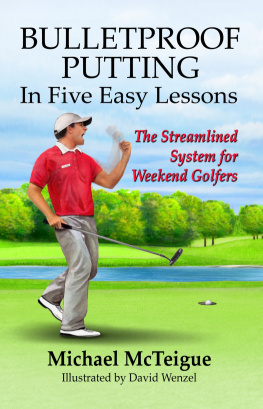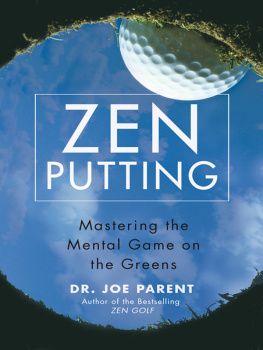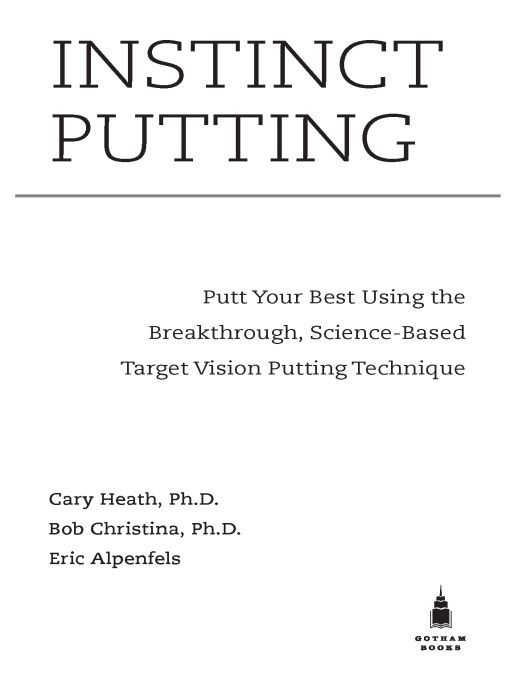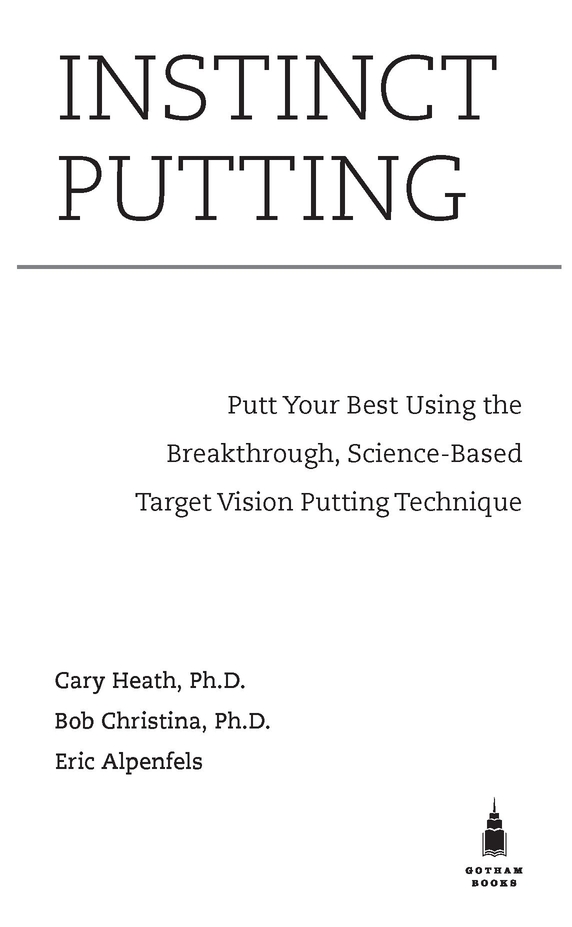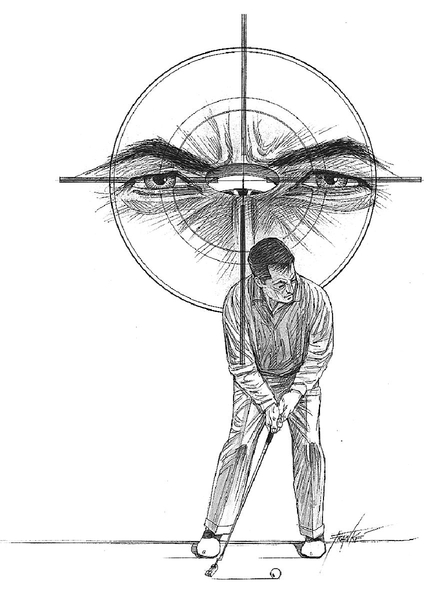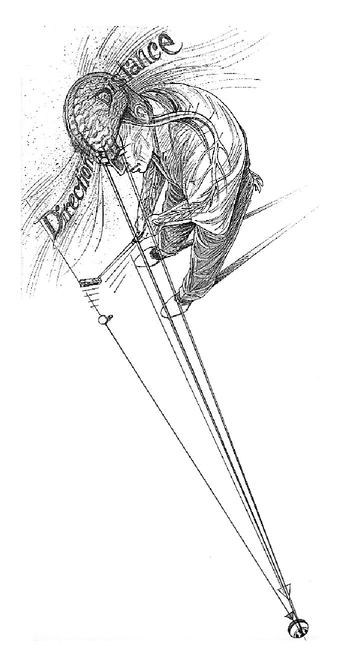Table of Contents
Bob Christina:
To my loving wife, Barbara, for her undying support of my passion for studying the most effective ways to teach, learn, and play the game of golf
Eric Alpenfels:
To my loving wife and life partner Anita, for her continual support and encouragement to pursue my dreams
Cary Heath:
For Dad, and for Tanner
Introduction
You say you want a revolution...
You say youve got a real solution...
Well, you know
Wed all love to see the plan.
John Lennon
Ill do almost anything to make a putt drop.
Jack Nicklaus
Putting is far and away the most important single element in playing the game of golf. Heres why: On a par-72 course, an even-par round typically calls for fourteen tee shots with the driver, four tee shots with an iron on par-3 holes, four shots with woods from the fairway on long par-5 holes, fourteen iron shots to the green, and thirty-six putts. Therefore, putting accounts for fully half the strokes in a typical round of golfas many shots as the rest of the game combined. It stands to reason that the single most important thing you can do to improve your golf score is to become a better putter.
Putting accounts for half the strokes in a typical round of golf.
This book will help you to do exactly thatstep by step, from the practice green to the course. Unlike other golf instruction books, which merely tweak this or modify thatbut offer little that is really newthis book presents an entirely different paradigm. We call this paradigm Instinct Putting. The intent of this book is to impart a clear understanding of Instinct Putting (IP for short), and guide you in adopting IP for your own game through a unique and enjoyable program of practice drills and exercises.
The IP method represents a revolutionary departure from conventional wisdom. However, it does not require radical changes in the mechanics of your putting stroke. IP allows you to go on putting pretty much as you always have, except for one all-important difference: You will execute the putt while looking at the target rather than the ball. In conventional putting, one is taught to look at the ball for the duration of the putting stroke, and not to look up until the ball is well on its way to the hole. In the alternative paradigmIPone looks at the hole or a point along the target line, not the ball, throughout the putting stroke.
Instinct putting requires that you focus both visually
and mentally on the targetthat you
really cast your consciousness out to the place where you intend to leave the ball. You will find that when you do this, when you focus intensely on the target, you will not be able to think much about the mechanics of the putting stroke. The brain can handle multiple tasks subconsciously, but it is relatively limited in terms of conscious thought. As you focus consciously on the target, your brain will process a steady stream of visual information regarding the position of the target and the length of the putt. But your brain cannot do this and consciously think through the mechanics of the putting stroke at the same time. Fortunately, it doesnt have to.
Each of us is endowed by nature with a powerful subconscious athletic intuition. We rely on it all the time. Imagine how difficult walking would be (not to mention gymnastics or ballet) if you tried to think consciously about where to
place each foot, how to shift your weight forward, and what to do with your arms. A complete description of the simple act of walking, in full anatomical and physiological detail, would fill hundreds of pages of text. Yet we are able to walk with ease, and perform other complicated physical acts every day, precisely because we direct our attention away from the action itself and focus instead on the destination. We think about
where to walk, not
how. And so it is with putting
.Your skill would improve dramatically if you learned to concentrate on WHERE to putt the ball and didnt try to think so much about HOW to execute the stroke. That is exactly what this book is all abouta radically unorthodox putting method in which one focuses on
where to putt the ball, not
how to execute the stroke.
If you thought this book was going to be all about the mechanics of putting, then you are in for a surprise. Some very knowledgeable people have written excellent putting instruction books that deal with mechanics, if thats what youre looking for. This just isnt one of those books. We take putting in a very different direction. It runs against the grain of accepted thought, and for that reason it will be read with much skepticism by some. Golf is essentially a conservative game, guided strongly by tradition, respectful of time-tested fundamentals, reluctant to accept departures from conventional wisdom. Although there are exceptionsPGA Hall of Fame golfer Johnny Miller, for example, stands outside the box with much of his analysis and instructionit seems fair to say that truly creative thinkers in golf are the exceptions that prove the rule.
On the other hand, this traditionalist generalization of golf might not be entirely accurate when it comes to putting. Touring professionals and weekend amateurs alike will agree that putting is the most subjective and most individualistic aspect of the game of golf. Good players have remarkably similar full-shot swings, especially through the so-called hitting area. At the crucial moment of impact they are doing about the same thing with the club. But when it comes to the art of puttingand putting is an arttheir styles may vary considerably. Perhaps the reason for so much diversity in putting styles lies in the fact that mechanical efficiency and physical strength are much less important than touch in this department of the game. And because touch is such a subjective thing, different people are going to capture it in their own, individual ways.
While it may be very subjective, touch is not magic, nor is it given only to a chosen few. Any person of average athletic ability can learn to capture that seemingly elusive feeling on virtually every putt. This book will teach you how.
THIS LEARNING PROCESS INVOLVES THREE GENERAL PHASES:1. Presenting the mind with a complete and thorough understanding of IPhow it works, scientific evidence that in fact it does work, and a thorough explanation of why it works.
2. Practicing a set of skill development drills that trains the body to perform what the mind understands. In this phase our mind gradually gives up more and more conscious control of the movements involved in performing the action. Conscious thinking begins to give way to intuition.
3. Practicing a set of drills that facilitates the




